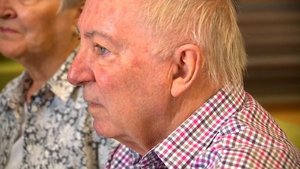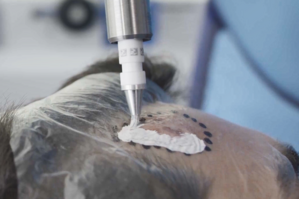News
Focusing on Treatment Education this May for Skin Cancer Awareness Month
OncoBeta® GmbH, a global medical device company specialising in innovative therapies for non-melanoma skin cancers (NMSCs), is supporting World Skin Cancer Awareness Month (May 2024) by focusing on educating patients suffering with NMSCs about the various treatment options currently available.
Global incidence continues to rise, with over 7.7 million cases of NMSC recorded annually.1 In response, the medical community is striving to enhance standard treatments and embrace new alternative approaches, enabling patients to personalise their care based on factors such as lesion localization, size, single or multiple lesions, age, other health conditions, and patient preference – all of which influence treatment selection. The overarching goal is to provide the optimal medical solution, achieve aesthetic outcomes, and prioritise a patient's quality of life.
Gerhard Dahlhoff, OncoBeta Medical Director, says “Education is critical for addressing the rising rates of NMSCs globally, and knowing different treatment options available will hopefully alleviate the stress and anxiety surrounding a diagnosis. Treatments can impact your work life, home life or even retirement life but thanks to innovative treatment alternatives, you can now find the one that is effective and minimises the impact on your mental and physical wellbeing.”
Laurie Leppard, residing in the Gold Coast, Australia, recently underwent treatment for a squamous cell carcinoma (SCC) situated on his left ear. Initial treatment options included surgery, risking disfigurement due to necessary cartilage removal, or radiation that would exacerbate his claustrophobia.

Laurie, skin cancer patient discusses treatment options.
“Traditional radiation would’ve required me to wear a mask over my face during sessions, which was considerably daunting given my claustrophobia – especially as I would’ve needed more than 20 daily treatment visits,” explains Laurie. “I really wasn’t keen for surgery, and worries about more complications, so I made it my mission to research alternatives. When I discovered the newer rhenium-188 treatment – a mask-free, single-session, painless alternative without scarring – I jumped at it. Given that each clinic visit entails a 100km round trip, the single-session rhenium-188 treatment saved me considerable time, energy, discomfort, and disruption to my life.”
Radiation Oncologist based in Queensland, Australia, A/Prof. Siddhartha Baxi says, “With one of the highest incidences of skin cancer in the world, Australia has been responsible for many effective community awareness campaigns warning the public about the risks of the harsh Australian sun and the need to monitor their skin for changes. Now we need to let everyone know there are several therapy options available to help address their concerns or anxieties around painful treatments, multiple visits in and out of hospital, recovery times and cosmetic outcomes – all that can impact work, personal and overall quality of life.”
In 2022, OncoBeta conducted research in Australia with over 1,200 people, to better understand attitudes towards skin health and treatment considerations. Australia has the highest incidence of recorded NMSCs, so this research provides valuable insights. The research asked patients diagnosed with NMSCs what factors they ranked highest: 97% said ‘successful removal of the lesion’ was extremely or very important. This was followed by ‘fast recovery’ (90%) then ‘quick and easy procedure’ (88%). More than three quarters of NMSC patients said a ‘painless’ procedure was extremely or very important (77%), followed by ‘good aesthetic results’ (76%) and ‘non-invasive’ (73%).2 §
The same research found that 81% of patients were treated surgically or with a combination of surgery and non-surgical treatments, however most respondents stated that it was extremely or very important for their treatment to be painless, non-invasive and provide good aesthetic results.2
Professor Julia Tietze, a Dermatologist at University Medical Centre Rostock (Germany) and author of a recent study published in Clinical Nuclear Medicine, says “I am able to discuss different treatment options with patients based on the size and depth of the lesion, also the location of the lesion, the medical history of the patient, the wishes of each individual considering their pain tolerance or ability to travel, and personal preference considering aesthetic outcomes or other factors.”
Mainstay treatments for NMSC include surgery, radiotherapy, cryotherapy and now epidermal radioisotope therapy, a procedure utilising the beta emitter radioisotope, rhenium-188:
- Surgery is a common treatment option for non-melanoma skin cancer; in particular ‘Mohs’ surgery. This is an invasive procedure to remove the cancer in several steps. First, a thin layer of tissue is removed. Then, a second thin layer of tissue is removed and viewed under a microscope to check for cancer cells. Layers are removed one at a time until the tissue viewed under a microscope shows no remaining cancer.
- Electrodessication and curettage is an option for some non-melanoma skin cancers. The doctor scoops out the cancer with a small, spoon-shaped instrument, then seals the wound and destroys any remaining cancer cells using heat.
- External beam radiation is sometimes used instead of surgery, especially for large NMSCs or for people who are not well enough to have surgery.3,4 It uses electron or photon beams to kill the cancer cells.
- Light-based treatment may be recommended for early-stage NMSCs. For 2-3 weeks the skin is prepared by applying cream or ointment daily. Then the doctor places you under an LED phototherapy lamp. This provokes an immune reaction by your body which kills the skin cancer. The process may or may not be painful.
- Cryotherapy (freezing) can be used for small, shallow skin cancers. After applying an anaesthetic, the doctor uses liquid nitrogen to freeze the cancer and destroy the cells. A blister or sore may form which heals, revealing healthy skin. Reduced skin pigmentation may occur.
- Topical treatment, a chemotherapy cream can be applied to the skin for a period of time, for treatment of Bowen’s disease – a mild, slow-growing type of skin cancer. Burning, redness and sores may occur.
- Rhenium-SCT is a localised radiation therapy that uses the rhenium-188 isotope which is applied as a paste directly to the lesion – it is a single session* lasting 45 to 180 minutes.5-7 It is painless6,7† and non-invasive6‡. A crust or scab forms that may become itchy. Rhenium-188 therapy leaves no scar but the skin may appear lighter.

Application of the rhenium-188 epidermal radioisotope therapy for treatment of non-melanoma skin cancers.
“It is important as health professionals to discuss all treatment options with our patients, so they feel empowered and make a decision that best suits their clinical and personal requirements – considering efficacy, safety, preference and quality of life. It could also be helpful in this process to include other specialists to discuss those options with the patient,” says Dr. Nicola Mulholland, Consultant Nuclear Medicine Physician at King’s College Hospital, London (UK).
The Head of Nuclear Medicine at Klinic Ottakring in Austria, Professor Doctor Siroos Mirzaei says, “The non-invasive character and the fantastic aesthetic results are the main reasons for choosing Rhenium-SCT, especially for tumours in a difficult localisation where a more precise therapy can be applied without damage to surrounding tissue.”
Early detection is key for treating skin cancer. World Skin Cancer Awareness Month offers key education about NMSCs and is an important reminder for people to regularly get their skin checked by a health professional. Ignoring a change in the skin or avoiding having it checked and monitored by a health professional means it may grow and/or spread to other parts of the body, or in the worst case it may become life-threatening.
Paolo Castellucci, Nuclear Medicine Physician at S. Orsola, Bologna (Italy), and Chairman of the International Registry for Non-Melanoma Skin Cancers, said “There are many treatment options for us as physicians to consider for our patients – including radiation therapy, using external beam, brachytherapy, Mohs surgery or using rhenium-188 – all of which have some benefits but also some drawbacks.”
OncoBeta’s Skin Cancer Treatment Awareness Month campaign is encouraging everyone to visit a GP, dermatologist, or other skin health specialist to inspect any changes to their skin, and if necessary to learn about ALL treatments that are available.
Find out more about treatment alternatives, visit: www.spotdetective.com
*Complete tumour regression in 98.5% of lesions treated.
†No pain reported during procedure.
‡A procedure is considered non-invasive when no break or cut in the skin is created.8
§OncoBeta’s research was conducted in November 2022 and surveyed a sample of 1,235 people aged 18 and above. OmniPoll post-weighted the results to the Australian Bureau of Statistics census data reflecting Australian’s overall population and providing statistically reliable insights.
References:
- Global Burden of Disease Cancer Collaboration, et al. JAMA Oncol. 2019;5(12):1749-1768.
- OmniPoll Survey November 2022.
- Radiation therapy for skin cancer. Available at: https://www.cancercouncil.com.au/skin-cancer/treatment/radiotherapy/ (Accessed March 2024).
- Radiation therapy for basal and squamous cell skin cancers. Available at https://www.cancer.org/cancer/basal-and-squamous-cell-skin-cancer/treating/radiation-therapy.html (Accessed March 2024].
- Castellucci P, et al. Eur J Nucl Med Mol Imaging. 2021;48(5):1511-1521.
- Cipriani C, et al. J Dermatol Treat. 2022;33(2):969–975. Epub 22 Jul 2020.
- Data on file. OncoBeta, Garching, Germany.
- Australian Therapeutic Goods Administration ARTG Public summary 400142.


